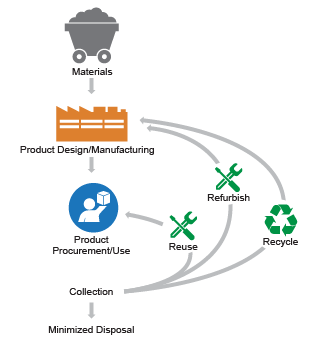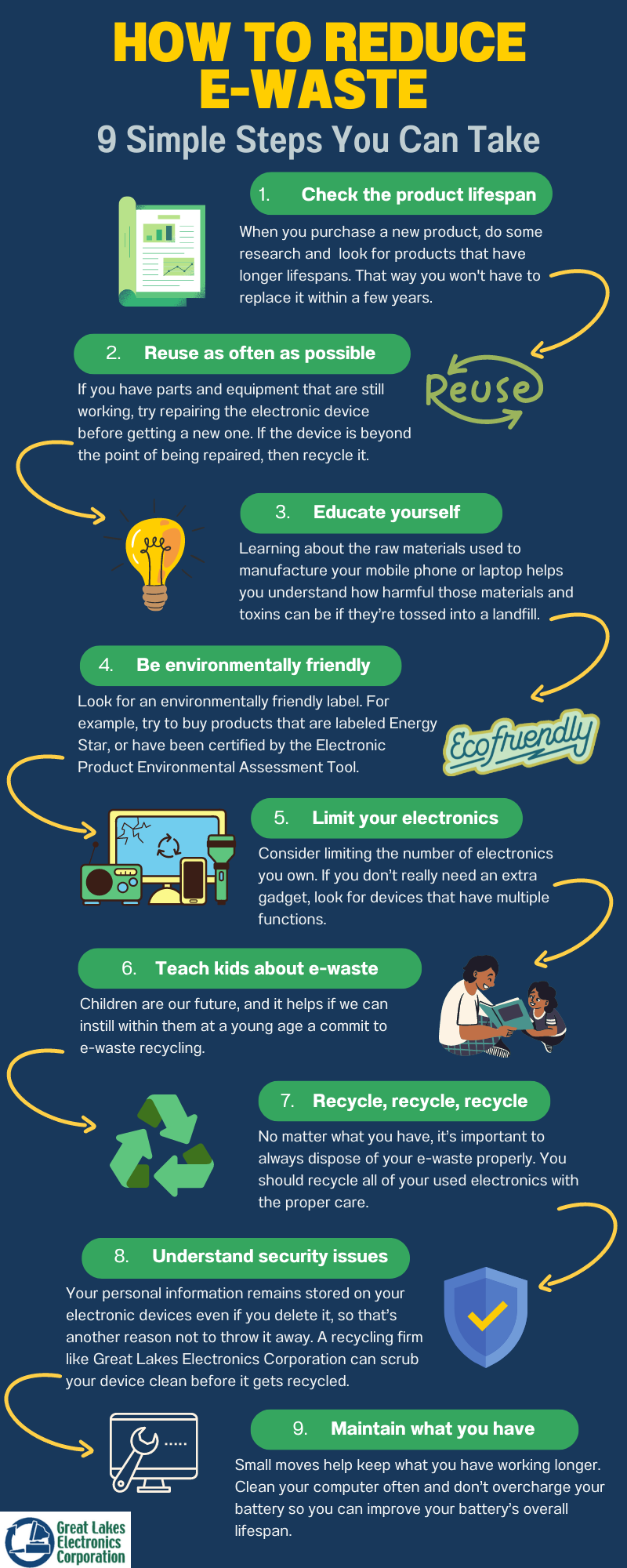What Does Recycling Lives Services Mean?
What Does Recycling Lives Services Mean?
Blog Article
How Recycling Lives Services can Save You Time, Stress, and Money.
Table of ContentsRecycling Lives Services for BeginnersThe 9-Second Trick For Recycling Lives ServicesThe Facts About Recycling Lives Services RevealedThe Ultimate Guide To Recycling Lives ServicesRecycling Lives Services Can Be Fun For Everyone

Additionally, all Oxfordshire regional authorities accept vapes and e-cigarettes as a different kerbside collection. Just how they are accumulated in each location differs a little; check you have the correct information for your area.
Portable batteries the kind you discover in little portable gadgets can additionally be reused at the kerbside but not inside any of your bins. Check the Waste Wizard for how to do this in your area. Larger shops that sell batteries also have collection points for reusing old batteries. Batteries need to always be eliminated from electric products where they are created to do so and reuse individually, Energy-saving, LED and small fluorescent light bulbs and tubes can be recycled at our recycling centres.
Recycling Lives Services Things To Know Before You Get This
Older-style filament or halogen light bulbs can be disposed of in your basic rubbish bin at home. Some DIY stores likewise have collection factors for light bulbs.

How Recycling Lives Services can Save You Time, Stress, and Money.
Electrical items are damaged down right into different pasts so that the different products they are made up of can be eliminated and recycled. Waste recycling centres are for use by owners just and can not approve waste from commercial resources.
E-waste, electronic waste, e-scrap and end-of-life electronics are terms often utilized to define used electronic devices that are nearing completion of their useful life, and are disposed of, given away or offered to a recycler. The UN specifies e-waste as any disposed of items with a battery or plug, and includes hazardous and unsafe compounds such as mercury, that can posture extreme danger to human and ecological health.
Our Recycling Lives Services PDFs
Just 17.4% of this digital waste, consisting of a blend of unsafe compounds and priceless materials, will be videotaped as being appropriately accumulated, dealt with and reused - https://anotepad.com/notes/bpwyy5xm. Many initiatives are carried out to tackle this growing issue, but none of them can be fully reliable without the energetic role and right education and learning of customers

Furthermore, extracting thrown out electronics produces 80% less emissions of carbon dioxide each of gold compared to mining it from the ground. In 2015, the extraction of resources accounted for 7% of the globe's power usage. This implies that moving in the direction of making use of more secondary basic materials in digital products could aid considerably in getting to the targets established out in the Paris Agreement on environment modification.
Our Recycling Lives Services Ideas
Every tool ever generated has a carbon footprint and is adding to human-made global warming. Produce a tonne of laptop computers and potentially 10 tonnes of carbon dioxide are produced. When the co2 launched over a gadget's life time is thought about, it mostly happens throughout manufacturing, before customers acquire a product. This makes reduced carbon procedures and inputs at the manufacturing stage (such as usage recycled basic materials) and item lifetime essential components of overall ecological impact.
Even in the EU, which leads the globe in e-waste recycling, simply 35% of e-waste is formally reported as properly collected and recycled. Internationally, the standard is 20%; the continuing to be 80% is undocumented, with much winding up buried under the ground for centuries as garbage dump. E-waste is not naturally degradable. The absence of reusing considers greatly on the international digital sector and as tools become more various, smaller and much more complicated, the problem intensifies.
The remaining mass of e-waste mainly plastics laced with steels and chemicals presents a much more intractable problem. A new vision for the manufacturing and usage of electronic and electrical items is required. It is simple for e-waste to be framed as a post-consumer problem, yet the problem includes the lifecycle of the gadgets every person utilizes.
Report this page